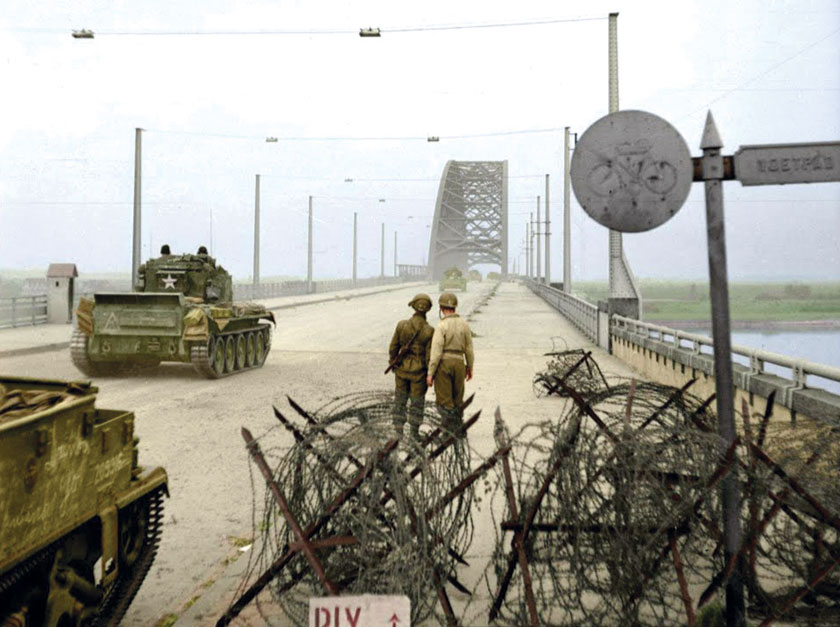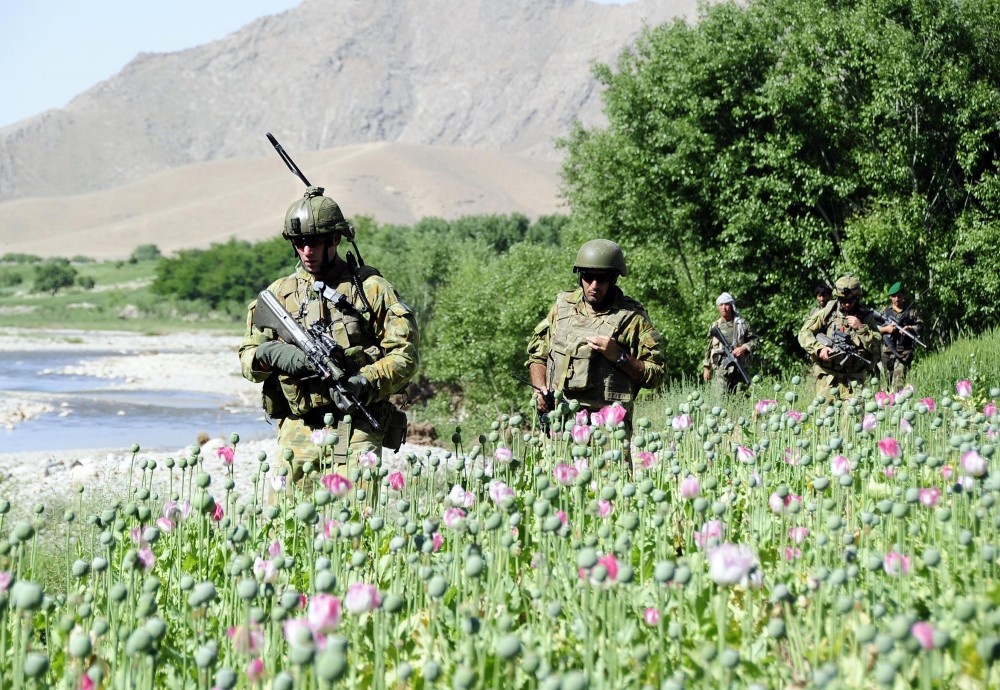
Operation Market Garden

Operation Market-Garden is widely regarded as a major Allied defeat, but this is not so clear cut. The Germans suffered serious losses and liberated part of the Netherlands, creating the basis for an attack on the Reich through the Reichswald, although this was not the original intention.
The largest operation involving airborne troops, carried out by the Allies in September 1944 in the territory of the occupied Netherlands, was aimed at disengaging German troops and bypassing the German defensive fortifications known as the "Siegfried Line" from the north, which was supposed to allow entry into Ruhr and thereby hasten the end of the war. The key issue was the capture of bridges on the Rhine and other rivers before Germany could destroy them. The operation was planned by Marshal Montgomery, who was in charge of the 21st Army Group and was in a race with the commander of the 3rd US Army, General George Patton, to see who would reach the industrial facilities of the Third Reich first. Montgomery persuaded General Dwight Eisenhower to undertake this operation, despite the great risk of carrying it out.
After the defeat in Normandy in the summer of 1944, German troops withdrew from France, and the Allied forces pursued them, limited mainly by difficulties in transporting fuel and other supplies that had to be transported from artificial ports in Normandy and a relatively small throughput, the ports of Cherbourg and Havre. On September 2, British troops entered Belgium, and two days later the Guards Tank Division liberated Brussels, moving through Belgian territory almost without a fight. At the same time, on 5 September 1944, the British XXX Corps, fighting further north, captured Antwerp with the 11th Panzer Division at the head. Meanwhile, the Polish 1st Armored Division, part of the Canadian 1st Army, took Ypres.

The 1st Allied Airborne Army, created in the summer of 1944, consisted of five divisions in two corps. The British 1st Airborne Corps had the 6th DPD and the 1st DPD and the 17th Polish Independent Parachute Brigade, while the American 82nd Airborne Corps had the 101st DPD, the XNUMXst DPD and the XNUMXth I am DPD.
At this moment, the commander of the XXX Corps made a fatal mistake. Immediately after the capture of Antwerp, it was necessary to go several tens of kilometers further north and cut off the Midden-Zeeland Peninsula from the rest of the country. This will close the retreat of the German 15th Army, which was retreating along the Belgian coast, through Ostend, to the northeast, parallel to the XXX Corps moving on a fairly wide front.
Antwerp is not by the sea, but at the mouth of the Scheldt, a large river that flows through France, from Cambrai, and then through Belgium. Just before the mouth of the Scheldt, it turns sharply to the west, towards a narrow long bay running from west to east. The northern shore of this bay is precisely the narrow at the base, then expanding the Zuid-Beveland peninsula and the island of Walcheren lying on its continuation, but actually connected with the peninsula by land passes (the island was before the drainage of the polders). When the British captured Antwerp, they imprisoned part of the 15th Army to the west of the city. However, the lack of a "closure" of the isthmus connecting the Zuid-Beveland peninsula with the rest of the mainland meant that between 4 and 20 September the Germans moved across the mouth of the Scheldt by various means of transport, mainly from the 65th and 000th Rifle Divisions ( DP). The aforementioned evacuation took place from the south-west of Antwerp to the Zuid-Beveland peninsula and the island of Walcheren connected with it, from where most of it penetrated deep into the Netherlands, under the very nose of the British XXX Corps, since its commander, Lieutenant General Brian Horrocks, was thinking rather about undertaking an attack eastward deep into the Netherlands and further into Germany, and that the Germans could be evacuated in such an organized manner, simply did not occur to him.
Meanwhile, however, a Guards Armored Division advancing further south unexpectedly entrenched itself on the Albert Canal in the Belgian town of Lommel, just before the border with the Netherlands, running almost from west to east, just before Germany itself turned south, creating protruding to the south is a small Dutch language, inside which is the city of Maastricht. Departing from France through all of Belgium, the Germans managed to break away from the Allied forces pursuing them, and it was on the Albert Canal that the main line of defense was created. It was a natural water barrier, quite wide, connecting Antwerp (Scheldt) and Liège (Meuse). This canal was a direct waterway from a well-known industrial center famous for its steel production, with a large seaport. The Mosa flowing through Liège, on the other hand, flowed northeast along the German-Dutch border not far from it, turned almost due north near Venlo, and turned sharply west near Nijmegen, paralleling two branches of the Rhine further north, exactly through the Netherlands , from east to west to the North Sea.
Several fairly large shipping channels pass through the Netherlands, which are dug quite easily here due to the exceptionally flat relief of South Holland. In addition, the swampy terrain with numerous swamps facilitated the organization of defense here. However, temporarily, from the beginning of September 1944, German troops pressed against the Albert Canal, which runs roughly parallel to the Belgian-Dutch border. And unexpectedly, on September 10, 1944, the 2nd Irish Guards Battalion, led by the 5th Guards Tank Brigade from the Guards Armored Division, broke into the village of Lommel near the town of Neerpelt and captured an intact bridge over the Albert Canal, through which the Guards Shermans swept through, occupying a small abutment on the north bank of the canal. From this town, road No. 69 went towards Eindhoven, where a little north of the city, in Son, it crossed the Wilhelmina Canal, and then through Grave, where the said road crossed the Meuse and Nimegen, where the road, in turn, crossed the southern branch of the Rhine - Waal , to Arnhem, where the road crossed the North Rhine - Lower Rhine. Then the same road went north to the very edge of the Netherlands, splitting at Meppel into a branch to Leeuwarden, closer to the sea, and Groningen, closer to the border with Germany. Then the Netherlands ended, here the coast turned east, next to Emden, which was already in Germany.
When on August 13 Marshal Bernard L. Montgomery proposed the first idea for a new operation, at this stage called "Comet", he wanted to use the captured bridge over the Albert Canal, which in the meantime was named "Joe's Bridge" in honor of the commander of the 3rd Irish Guards Battalion - lieutenant colonel. John Ormsby Evelyn Vandeleur, Mechanized Infantry Battalion (his initials JOE, also the name of Lieutenant Colonel Vandeleur) to launch an attack on Highway 69 at Arnhem from this beachhead. Thus, his troops would have been north of the German fortifications known as the "Siegfried Line", which ran along the entire border with France, Luxembourg and Belgium, as well as part of the Netherlands, and ended in the Kleve region, where the Rhine flows to the Dutch side, slightly behind the border, splitting into two large arms: the Waal in the south and the Lower Rhine in the north, crossing the Netherlands and leaving the North Sea. An exit north of the Lower Rhine made it possible to turn east and invade Germany north of the Siegfried Line and north of the Ruhr, towards Münster. An attack cutting off the Ruhr from the rest of Germany would have been a disaster for the German war effort and should have brought the fighting to a swift end.

